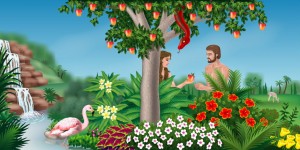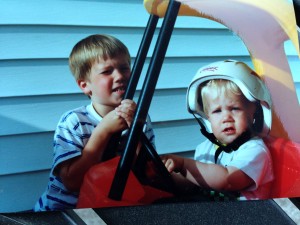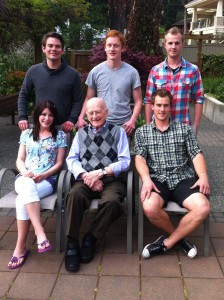What are the major differences or similarities between the ethos of the creation story you are familiar with and the story King tells in The Truth About Stories ?
Due to not coming from a religious background, there is no one creation story that I necessarily believe in, nor are very familiar with. I tend to believe in the earth forming through a purely scientific route, such as the ‘scientific view’ shown on this page. Although this link is to a religious tolerance group’s website, I feel it gives a nice and quick synopsis of what I generally believe. For the purpose of this assignment I did some research into several different creation stories, finding that the one I was most familiar with was that of Adam and Eve – for those who are unfamiliar with many religious creation stories (like myself), this is an easy to understand synopsis of their story. Basically, Adam and Eve are put in the Garden of Eden by God, and asked to watch over it. They are allowed to eat anything in the garden, except for fruit from the Tree of Knowledge at the centre of the garden. Curiosity (in the form of a talking snake) forces them to eat the fruit from the Tree of Knowledge. The next day they admit to God that they ate the fruit, and he banishes them to earth, where Adam must work to grow crops and create food, while Eve must deal with the pain of giving birth.
The story of Charm is quite different from that of Adam and Eve. It begins with her having a craving for the ‘red furn foot’. Her hunt for her craving, which King alludes to some type of curiosity, turns into her digging too deep and falling through the planet onto Earth; which is covered in water. She is forced to dive for sand/mud to create some sort of habitable land which she can live on. Her twins then create more life on the land. It is clear that this story is quite different from the one of Adam and Eve that I talked about before, but I found one main similarity between the two creation stories – curiosity. Adam and Eve are curious about eating the fruit from the Tree of Knowledge (forcing God to condemn them to Earth), whereas Charm is curious about how far she can dig to reach her craving (causing her to fall to Earth and create life). Although there are many differences in these two creation stories, I find it very interesting that curiosity is the main similarity.
Works Cited
- King, Thomas. The Truth about Stories. Minneapolis: University of Minnesota Press, 2003. Print.
- Religious Tolerance. 1999. Belief systems about the origins of life & the development of species. Web. Retrieved on March 23, 2015 from <http://www.religioustolerance.org/ev_world.htm>
- Short Story. n/a. The Origin of the World –> Adam and Eve. Web. Retrieved on March 23, 2015 from <http://shortstoriesshort.com/story/adam-and-eve/>




